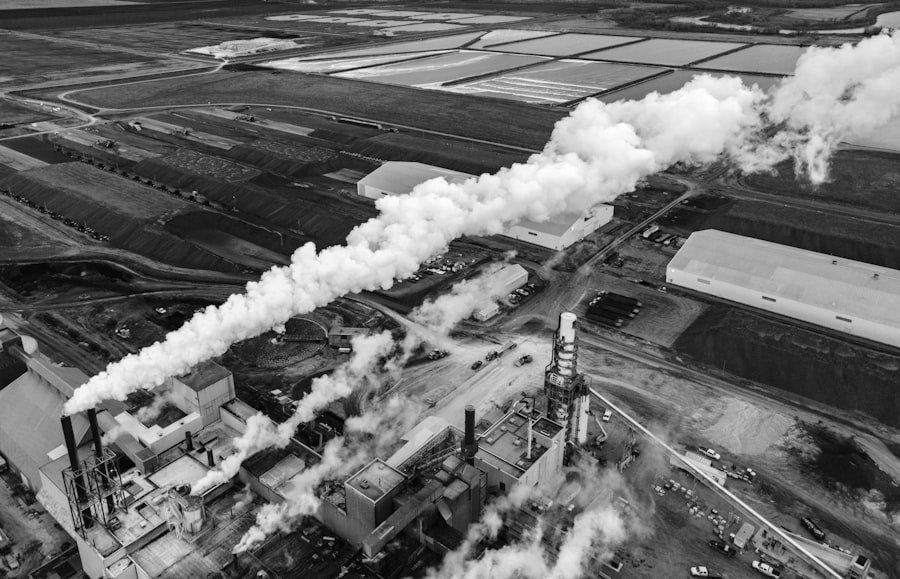Economies of scale are cost advantages businesses gain by increasing production levels. As production scales up, the average cost per unit decreases. This occurs due to fixed costs being spread over more units and the ability to negotiate better prices for inputs.
Economies of scale are fundamental to microeconomics and drive production efficiency. Fixed costs, such as rent, insurance, and salaries, do not vary with production levels. When production increases, these costs are distributed across more units, reducing the average cost per unit.
Larger production volumes may also enable better negotiation of input prices, further lowering unit costs. Additionally, increased production can lead to greater specialization and division of labor, enhancing efficiency and reducing costs. Economies of scope are related cost advantages achieved by producing a wider range of products.
By sharing resources and capabilities across multiple product lines, businesses can decrease average unit costs and improve overall efficiency. This concept is particularly relevant in industries like manufacturing and retail, where companies often produce and sell various related products.
Key Takeaways
- Economies of scale refer to the cost advantages that businesses can achieve by increasing their scale of production, leading to lower average costs.
- There are two main types of economies of scale: internal, which result from the company’s own actions, and external, which result from the industry as a whole.
- Economies of scale drive efficiency by spreading fixed costs over a larger quantity of output, leading to lower average costs and increased profitability.
- Examples of economies of scale in action include bulk purchasing, specialization of labor, and technological advancements that lower production costs.
- Challenges in achieving economies of scale include the risk of over-expansion, loss of flexibility, and potential diseconomies of scale as the organization grows.
Types of Economies of Scale
Technical Economies of Scale
One type of economies of scale is technical economies of scale, which refers to the cost advantages that arise from increasing the size of individual production units. For example, a larger factory may be able to produce goods at a lower cost per unit than a smaller factory, due to factors such as better utilization of machinery and more efficient use of labor.
Managerial Economies of Scale
Another type of economies of scale is managerial economies of scale, which refers to the cost advantages that arise from increasing the size of the management team. As a business grows, it may be able to afford more specialized managers and support staff, leading to improved decision-making and overall efficiency. In addition, larger businesses may be able to invest in better management systems and processes, further driving down costs and increasing efficiency.
Financial Economies of Scale
Financial economies of scale are another important type of economies of scale. This refers to the cost advantages that arise from increasing the size of a business’s operations. Larger businesses may be able to access cheaper sources of finance, such as through lower interest rates on loans or better terms from suppliers. This can lead to lower overall costs and increased efficiency.
How Economies of Scale Drive Efficiency

Economies of scale are a key driver of efficiency in production and can have a significant impact on a business’s bottom line. By leveraging economies of scale, businesses can reduce their average cost per unit and increase their overall profitability. This can be achieved through a variety of means, such as spreading fixed costs over a larger number of units, negotiating better prices for inputs, and increasing specialization and division of labor.
One way that economies of scale drive efficiency is by allowing businesses to produce goods at a lower average cost per unit. As the scale of production increases, fixed costs are spread out over a larger number of units, leading to a lower average cost per unit. This can give businesses a competitive advantage by allowing them to offer lower prices to consumers while still maintaining healthy profit margins.
In addition, economies of scale can drive efficiency by allowing businesses to negotiate better prices for raw materials and other inputs. As production increases, businesses may be able to achieve greater purchasing power and negotiate better terms with suppliers. This can lead to lower input costs and increased profitability.
Examples of Economies of Scale in Action
There are many examples of economies of scale in action across a wide range of industries. One example is in the manufacturing sector, where businesses can achieve economies of scale by increasing the size of their production facilities. By investing in larger factories and more efficient machinery, businesses can produce goods at a lower average cost per unit, leading to increased profitability.
Another example is in the retail sector, where businesses can achieve economies of scale by increasing the size of their operations. By opening more stores and increasing their purchasing power, retailers can negotiate better prices with suppliers and reduce their overall costs. This can allow them to offer lower prices to consumers while still maintaining healthy profit margins.
In the technology sector, businesses can achieve economies of scale by increasing the size of their user base. For example, social media platforms and online marketplaces can achieve economies of scale by attracting more users to their platforms, which allows them to generate more advertising revenue and achieve greater economies of scope by offering a wider variety of services.
Challenges in Achieving Economies of Scale
While economies of scale can drive efficiency and increase profitability, there are also challenges associated with achieving them. One challenge is that as businesses grow larger, they may become more complex and difficult to manage. This can lead to inefficiencies and increased costs, offsetting some of the benefits of economies of scale.
Another challenge is that achieving economies of scale often requires significant upfront investment. For example, businesses may need to invest in larger production facilities or expand their operations in order to achieve economies of scale. This can be risky and may require access to significant amounts of capital.
In addition, achieving economies of scale may require businesses to make changes to their organizational structure and processes. For example, they may need to invest in new management systems or reorganize their production processes in order to achieve greater specialization and division of labor. This can be time-consuming and may require significant resources.
Strategies for Leveraging Economies of Scale

There are several strategies that businesses can use to leverage economies of scale and drive efficiency. One strategy is to invest in larger production facilities and more efficient machinery. By increasing the size of their operations, businesses can produce goods at a lower average cost per unit, leading to increased profitability.
Another strategy is to increase the size of their operations in order to achieve greater purchasing power. By opening more stores or expanding their user base, businesses can negotiate better prices with suppliers and reduce their overall costs. This can allow them to offer lower prices to consumers while still maintaining healthy profit margins.
In addition, businesses can leverage economies of scale by investing in new management systems and processes. By improving decision-making and overall efficiency, businesses can reduce costs and increase profitability.
The Future of Economies of Scale in Driving Efficiency
In the future, economies of scale are likely to continue to play a key role in driving efficiency across a wide range of industries. As technology continues to advance, businesses will have new opportunities to achieve economies of scale through automation and improved production processes. This can lead to lower average costs per unit and increased profitability.
In addition, as global markets continue to expand, businesses will have new opportunities to achieve economies of scale through increased specialization and division of labor. By leveraging global supply chains and accessing new markets, businesses can reduce costs and increase efficiency. Overall, economies of scale will continue to be an important driver of efficiency in production and will play a key role in shaping the future competitive landscape across industries.
Businesses that are able to effectively leverage economies of scale will be well-positioned to achieve greater profitability and long-term success.
If you’re interested in learning more about the role of economies of scale in driving efficiency, you should check out the article “The Importance of Economies of Scale in Business” on The Econosphere. This article delves into how businesses can benefit from economies of scale and how it can lead to increased efficiency and cost savings. It’s a great resource for understanding the impact of economies of scale on business operations.
FAQs
What are economies of scale?
Economies of scale refer to the cost advantages that a business can achieve by increasing its scale of production. This means that as a company produces more goods or services, its average cost of production decreases.
How do economies of scale drive efficiency?
Economies of scale drive efficiency by allowing businesses to spread their fixed costs over a larger number of units, leading to lower average costs. This can result in increased productivity, improved profitability, and a competitive advantage in the market.
What are the different types of economies of scale?
There are three main types of economies of scale: 1) Internal economies of scale, which result from factors within the company such as improved technology or specialization; 2) External economies of scale, which result from factors outside the company such as industry-wide improvements in infrastructure or access to skilled labor; and 3) Diseconomies of scale, which occur when a company becomes too large and experiences a rise in average costs.
How do economies of scale impact pricing?
Economies of scale can allow businesses to lower their prices while still maintaining profitability, as their lower average costs enable them to offer competitive pricing in the market. This can lead to increased market share and customer loyalty.
What are some examples of economies of scale in action?
Examples of economies of scale include bulk purchasing discounts, efficient use of resources, automation and technology improvements, and specialization of labor. These factors can all contribute to lower average costs and increased efficiency for businesses.








